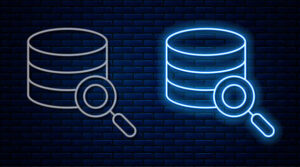In today’s globalized and interconnected economy, the integrity of business practices and public institutions has become a critical concern. Bribery remains one of the most corrosive forms of corruption, affecting both developed and developing nations. It erodes public trust, increases the cost of doing business, undermines fair competition, and contributes to social inequality. In response to the widespread and persistent threat of bribery, the International Organization for Standardization (ISO) introduced ISO 37001, a standard specifically designed to help organizations prevent, detect, and respond to bribery.
With the upcoming ISO 37001:2025 update, expected to build upon the original 2016 version, the world of anti-bribery compliance is poised for refinements that align with the evolving risks and expectations in the modern era. This updated version is not just a technical revision but an advancement in how organizations integrate ethical governance into everyday operations. The update is expected to address emerging challenges, close gaps identified since the previous standard’s release, and enhance applicability across diverse sectors.
This article will provide an in-depth look into ISO 37001:2025, including its purpose, background, structure, benefits, implementation guidelines, audit and certification process, integration with other ISO standards, and its potential impact on both public and private sectors.
What Is ISO 37001 and Why Is It Important?
ISO 37001 is an international standard for Anti-Bribery Management Systems (ABMS). First published in 2016, it was designed to provide a comprehensive framework for organizations to establish, implement, maintain, and improve anti-bribery compliance programs. Unlike general compliance or ethics guidelines, ISO 37001 is structured as a certifiable management system standard, similar in format to ISO 9001 (Quality Management) or ISO 14001 (Environmental Management).
Bribery, by definition, involves the offering, promising, giving, accepting, or soliciting of an advantage as an inducement for action which is illegal, unethical, or a breach of trust. ISO 37001 addresses both active and passive forms of bribery. It applies to bribery by the organization or its personnel, as well as bribery by third parties acting on its behalf.
The importance of this standard lies in its preventive approach. Instead of waiting for misconduct to be discovered, ISO 37001 helps organizations design systems that proactively reduce the likelihood of bribery occurring. It applies to organizations of all types—whether private, public, non-profit, large or small—and is intended to be scalable to their size and risk profile.
With the 2025 revision, the standard is expected to be updated to reflect evolving legal expectations, best practices, and technological tools available to organizations, making it even more robust and applicable in today’s anti-corruption landscape.
Key Objectives of ISO 37001:2025
The updated ISO 37001:2025 standard aims to achieve several crucial goals, in both conceptual and operational terms:
- Strengthen Internal Controls: Enhance the ability of organizations to monitor financial transactions, third-party dealings, and procurement processes to detect and prevent bribery.
- Improve Risk Assessment Mechanisms: Foster advanced risk identification techniques that help organizations evaluate exposure to bribery risks based on country, sector, size, and nature of operations.
- Promote Ethical Culture: Encourage leadership commitment to ethical behavior, creating a top-down culture where bribery is not tolerated and whistleblowing is protected.
- Increase International Harmonization: Align anti-bribery practices across jurisdictions to create more consistency in global compliance requirements, especially for multinational enterprises.
- Enhance Transparency in Business Relationships: Address concerns around intermediaries, joint ventures, mergers, and supply chains, ensuring anti-bribery obligations extend beyond internal functions.
The 2025 revision will not depart from the core intent of the original standard but will refine its clauses and guidance to reflect practical learning from years of implementation.
Structure of ISO 37001:2025: Understanding the Clauses
Like other modern ISO management system standards, ISO 37001 follows the High-Level Structure (HLS), which allows for easier integration with other ISO standards. The key clauses are:
1. Context of the Organization
This clause requires organizations to understand their external and internal context, including legal, cultural, and regulatory environments. It mandates identifying interested parties and their expectations, which may affect the ABMS.
2. Leadership and Commitment
The standard emphasizes the role of top management in promoting an anti-bribery culture. This includes issuing a formal anti-bribery policy, assigning responsibility for compliance functions, and ensuring adequate resources.
3. Planning
Organizations must perform a risk assessment and develop an action plan for mitigating identified bribery risks. Planning also includes setting objectives for the ABMS and determining how to achieve them.
4. Support
This clause covers the resources, communication channels, training programs, and documented information required for effective implementation of the anti-bribery system.
5. Operation
At the core of the ABMS, this clause includes procedures for managing bribery risk in various operations—such as due diligence, financial controls, non-financial controls, and procurement activities.
6. Performance Evaluation
Organizations must monitor, measure, analyze, and evaluate the performance of the ABMS, using audits, internal reviews, and management reporting systems.
7. Improvement
This section requires organizations to take corrective actions when non-conformities are identified, and to continually improve the effectiveness of the anti-bribery system.
The upcoming revision in 2025 may introduce greater detail in due diligence requirements, improved guidance for small and medium enterprises (SMEs), and possibly align more explicitly with digital risk management tools.
Benefits of Implementing ISO 37001:2025
Organizations that adopt and certify to ISO 37001:2025 will enjoy multiple benefits, both tangible and reputational. These include:
1. Legal Protection and Risk Mitigation
By implementing structured anti-bribery controls, organizations can demonstrate due diligence in preventing misconduct. This can be a mitigating factor in legal investigations or regulatory scrutiny, potentially reducing penalties.
2. Enhanced Reputation and Trust
Certification sends a strong message to stakeholders, investors, customers, and regulators that the organization is committed to ethical practices. This builds long-term credibility and market advantage.
3. Operational Transparency
A well-structured ABMS introduces transparency in financial operations, decision-making, and third-party engagements. This reduces the risk of fraud and internal collusion.
4. Improved Internal Governance
ISO 37001 fosters clear roles, responsibilities, reporting lines, and decision-making protocols. These governance improvements benefit the organization even beyond anti-bribery goals.
5. Competitive Advantage in Global Markets
As governments and procurement agencies increasingly require evidence of anti-bribery compliance, certification becomes a key differentiator in winning contracts, especially in regulated sectors.
Implementation Steps for ISO 37001:2025
Successfully adopting ISO 37001:2025 requires a structured, step-by-step approach tailored to the organization’s size, complexity, and sector. Here’s an overview of typical stages:
1. Gap Assessment
Evaluate the current state of the organization’s compliance and ethics programs. Identify gaps against the ISO 37001:2025 requirements.
2. Stakeholder Engagement
Secure buy-in from senior leadership and communicate the importance of anti-bribery measures across departments.
3. Risk Mapping and Policy Development
Conduct a detailed bribery risk assessment and develop or refine the anti-bribery policy, ensuring it reflects the organization’s activities and exposures.
4. Training and Awareness
Deliver comprehensive training programs for employees, contractors, and third parties. Reinforce key messages through regular communication.
5. Establish Controls and Procedures
Implement due diligence systems, approval workflows, reporting mechanisms, gift/hospitality registers, and whistleblower channels.
6. Monitor, Review, and Audit
Regularly assess the effectiveness of the ABMS. Internal audits, performance evaluations, and management reviews are central to this process.
7. External Certification
If desired, organizations can apply for third-party certification from an accredited body. This typically involves a Stage 1 (documentation review) and Stage 2 (on-site audit) process.
Ongoing improvement and adaptation are critical post-certification to ensure continued compliance with both ISO requirements and local anti-bribery laws.
Relationship with Other ISO Standards
ISO 37001:2025 is designed for easy integration with other ISO management system standards. This allows organizations to build a comprehensive compliance ecosystem without redundancy. Commonly integrated standards include:
- ISO 9001 (Quality Management): For process consistency and customer satisfaction.
- ISO 14001 (Environmental Management): For sustainable operations.
- ISO 45001 (Occupational Health and Safety): For employee well-being and legal compliance.
- ISO 31000 (Risk Management): For enterprise-wide risk assessment and controls.
- ISO 37301 (Compliance Management): Directly supports the governance and monitoring framework that ISO 37001 depends on.
Integrating these standards provides a holistic approach to risk management, combining ethical conduct, legal compliance, operational excellence, and sustainable development.
Who Should Consider ISO 37001:2025 Certification?
Although the standard is universally applicable, it is particularly beneficial for:
- Multinational Companies: Operating in regions with varying legal systems and corruption risks.
- Public Sector Entities: Looking to ensure transparency in procurement and governance.
- NGOs and Non-profits: Especially those dependent on donor funding and public trust.
- Construction and Infrastructure Firms: Operating in high-risk environments.
- Banks and Financial Institutions: Where transparency and compliance are paramount.
- Healthcare and Pharmaceuticals: Sectors prone to bribery due to procurement and licensing complexities.
Whether the goal is certification or internal alignment, ISO 37001:2025 offers a practical roadmap for any organization seeking to eliminate bribery risks and demonstrate integrity.
Anticipated Changes in ISO 37001:2025
The 2025 version of the standard is likely to include:
- Stronger Digital Monitoring Mechanisms: Addressing cyber-enabled bribery and compliance monitoring through AI and analytics.
- Expanded Third-Party Risk Management: Including enhanced vetting and contractual obligations for agents and suppliers.
- SME-Friendly Frameworks: Scaled-down requirements and simplified guidance for small and mid-sized businesses.
- Alignment with ESG Principles: Incorporating ethical governance as part of broader sustainability objectives.
- Updated Guidance Annexes: Providing real-world examples and templates for implementation.
These updates aim to maintain the relevance of the standard in a rapidly changing world of business and regulatory compliance.
ALSO READ: A Comprehensive Guide to a Blinking Check Engine Light: Causes, Risks, and Actions
FAQs About ISO 37001:2025
1. What is ISO 37001:2025 and how does it differ from the 2016 version?
ISO 37001:2025 is the revised version of the original ISO anti-bribery standard released in 2016. While the core structure remains, the 2025 update is expected to include improvements such as better third-party risk guidance, integration with digital compliance tools, and updated annexes for global applicability.
2. Can small businesses implement ISO 37001:2025 effectively?
Yes, the standard is scalable. The 2025 version is expected to offer more SME-friendly frameworks, allowing small businesses to implement practical controls without excessive complexity or cost. Simplicity and adaptability are key strengths of ISO 37001.
3. Is ISO 37001:2025 certification mandatory for compliance?
No, certification is voluntary. However, organizations often pursue certification to demonstrate due diligence, build stakeholder confidence, and fulfill contractual or regulatory requirements, especially in high-risk industries.
4. How does ISO 37001:2025 address bribery in third-party relationships?
The standard requires organizations to conduct due diligence on agents, consultants, suppliers, and joint venture partners. The 2025 revision is expected to strengthen these requirements by adding more structured tools for risk scoring, monitoring, and contractual safeguards.
5. Can ISO 37001:2025 help in legal defense against bribery accusations?
Yes, although it doesn’t provide immunity, certification can demonstrate that an organization took reasonable steps to prevent bribery. This can act as a mitigating factor in legal investigations or reduce liability under certain national laws.









